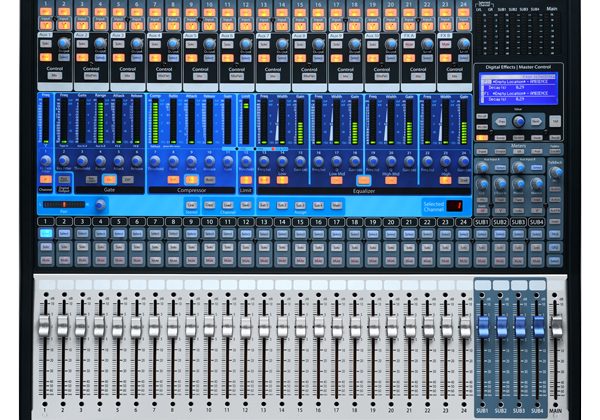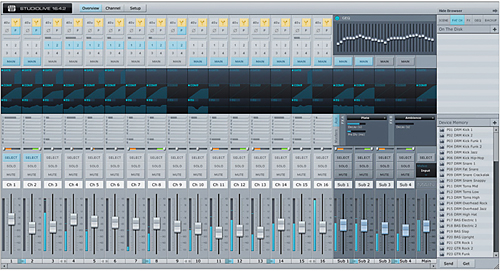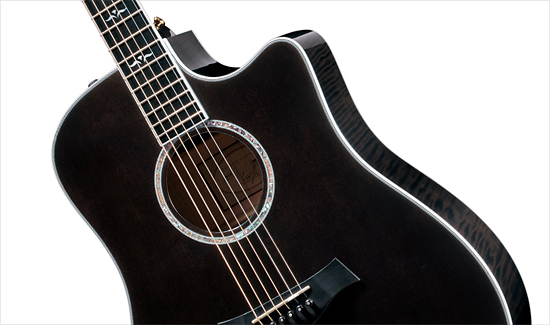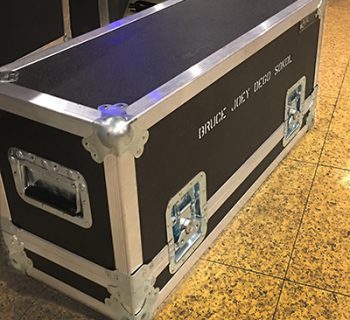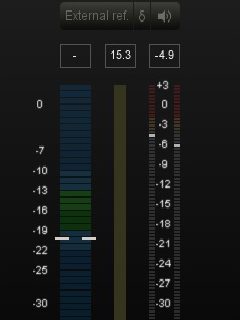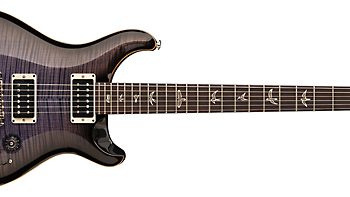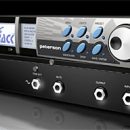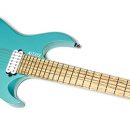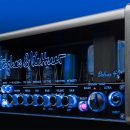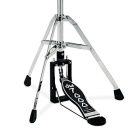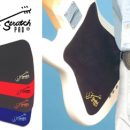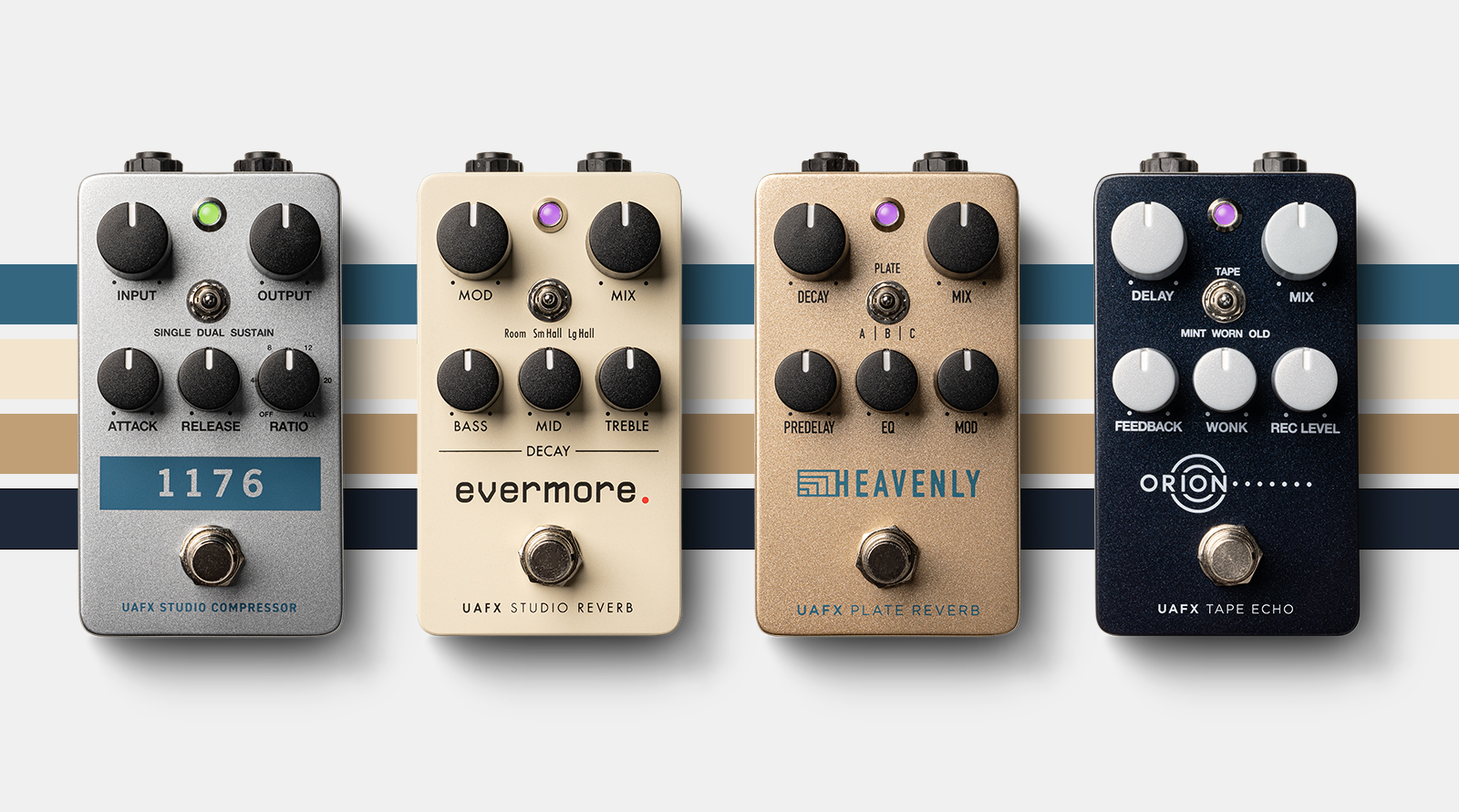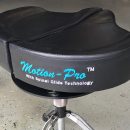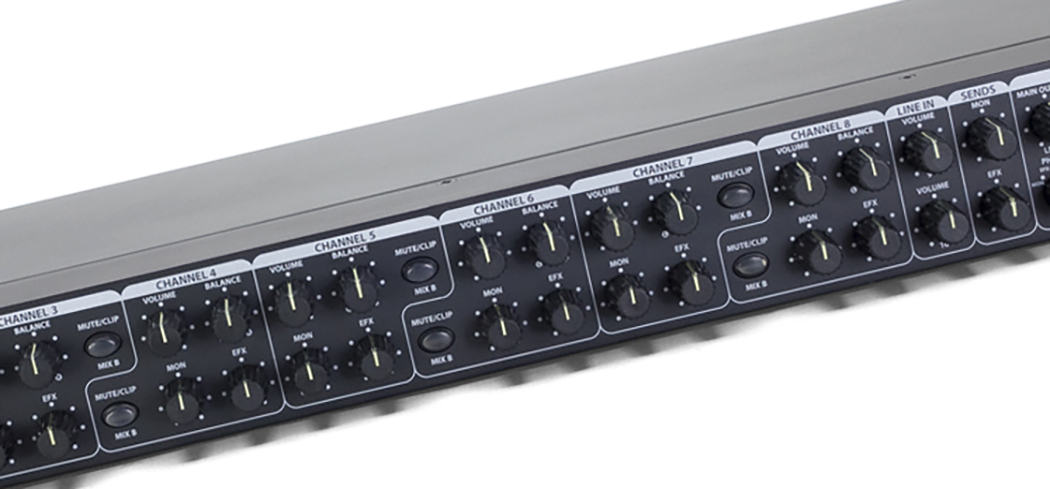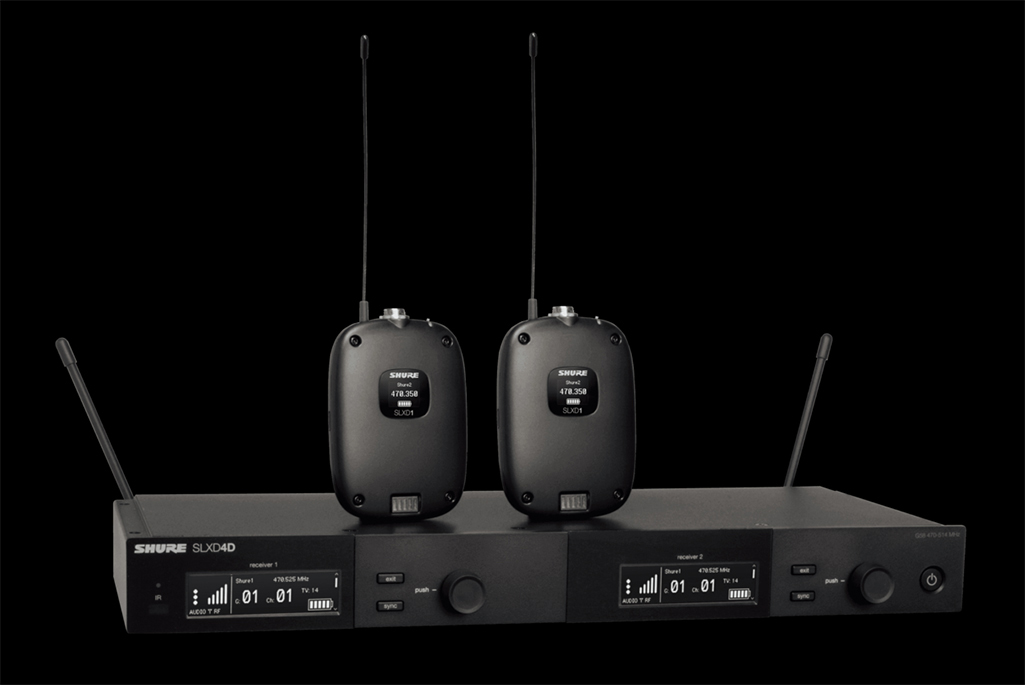
Digital mixing boards have come along way since the market for small format digital mixers exploded, fueled by early products from Yamaha and Tascam that broke through the price/performance barrier. And today, thanks to the success of Avid’s ICON series of mixing boards, digital consoles are at the heart of thousands of larger recording studios, and the related VENUE line of digital consoles are almost a standard buy for large-scale production companies looking to record on the go. But where are the products that bridge the gap between extremely pricey consoles and the smaller, singularly focused digital boards like those early innovators? The chasm is thousands of dollars wide.
For many studios and music venues, there is no bridging the price gap, thus analog mixing boards still reign supreme. And in the professional project studio or small commercial facility, there is probably no more ubiquitous mixing board than something from the Mackie SR series, used on more recordings in the past decade or so than anyone could possibly keep track of. The variety of mixing boards installed in live venues is an enormously diverse list far too great to mention.
When PreSonus introduced the StudioLive series of mixers two years ago, we were blown away by the combination of features suited to both recording and live performance (hence the name) — at a price point that seemed ridiculously low for what you were getting.
The subject of this review, the flagship StudioLive 24.4.2 console, delivers so much good stuff on so many fronts that we can say without hesitation that this mixer is going to do for the small pro studio and live venue today what the Mackie SR series did over a decade ago: reinvent what is possible with tools that used to be available only to people with extremely fat pockets. We’re so convinced of the merits of this board that we have built the next generation of the MusicPlayers.com testing, performance, and recording studio around the 24.4.2.
Why all this excitement? Sure, there are plenty of four-bus consoles out there, but with ten sends? Holy cow! A small club can run as many as five stereo monitor mixes, and in the recording studio, large music groups can have easily customized monitor mixes to improve the tracking experience.
Want to record? The twenty-four XMAX preamps have good headroom and are very quiet, and there is a FireWire interface for direct connection to your computer. Besides some excellent DAW software products from PreSonus (like Studio One, discussed later in the review), Avid’s Pro Tools software finally supports running on third-party hardware — a game changer for so many of us who rely on this industry-standard DAW platform. Pairing a StudioLive 24.4.2 mixer with Avid’s Pro Tools 9 delivers an unbeatable value for studios looking to build an all-digital Pro Tools environment at a fraction of the price of Avid’s more costly hardware solutions.
This review is something of a departure for us because we tend not to include so much reference to other companies’ products, but the StudioLive 24.4.2 finds itself in a unique position as the best hardware solution for a project studio or small commercial Pro Tools-based studio.
The StudioLive series also makes a very unique product for the live sound market, especially in clubs that feature live music but lack the space for proper placement of the mix desk at the rear center of the room. Besides a host of features well suited to a live board (not counting all those sends), this board can be operated remotely from an application running on either a laptop computer or an iPad.
For every band that has had to play a gig at a club that is forced to place its mixer somewhere on the stage due to space constraints, it’s time to rejoice. A sound engineer can place the StudioLive (with a laptop connected) anywhere convenient for patching instruments and monitors, then just step out front and center with a mobile application on his/her iPad to dial in levels, effects, monitors, and more.
Throw in some included software that makes it a one-click effort to multi-track record the evening’s performance and you start realizing just how powerful a solution this mixer can be in a wide range of environments.
In short, this mixer needs to be at the top of your list whether you’re retrofitting your recording studio, rehearsal studio, or live performance venue. It works well in both environments and really lives up to its moniker. And if your budget or input needs aren’t as grand, PreSonus has a few smaller versions of the StudioLive described at the end of this review.
Features
![]()
The PreSonus StudioLive 24.4.2 is a four-bus mixer equally suited to the recording studio and the live venue. Rather than give you the complete laundry list of details, we’ll focus our discussion on items of specific interest and excitement:
- 24 channels featuring XMAX microphone preamps on XLR connections. These high-headroom preamps aim to be transparent in design, with a 20 Hz — 20 kHz frequency response on the main outputs (40 kHz on the direct outs), THD below 0.005% (+4 dBu), -94dB signal-to-noise ration on the mains (-97dB on the direct outs).
- 24 line inputs on ¼” TRS connections extend down to 10 Hz on the main outs. There are additional inputs for tape/CD (RCA), and two stereo pairs of additional TRS inputs. All 24 channels feature insert jacks for interfacing with external processors, and100 mm long-throw faders.
- Two additional channels (channel 25 and 26) are internal, and exist so that when you send master returns from your computer to the mixer you don’t have to waste two of your input channels for signal routing.
- The 24.4.2 has four subgroups and ten auxiliary buses. Five stereo monitor mixes (or ten mono) are now within your affordable reach!
- There are control room outs, and a talkback mic input. If you’re desperate for even more inputs, the talkback mic actually features the same XMAX preamp as the channels and be used for tracking, too.
- Fat Channel. All 24 channels have a high-pass filter, compressor, limiter (independent of the compressor), noise gate/expander, four-band fully parametric EQ, and pan. The physical channels each include trim controls and fully independent phantom power. Additionally, each channel has a 180-degree phase switch.Another useful feature lets you select whether or not you want the Fat Channel settings to be sent with your audio to the FireWire bus. This makes it easy to set up things like gates, compressors, and EQs for the live and monitor sounds, but to record the dry signal into your DAW for post-processing later. It’s assignable on a per-channel basis, too!Additionally, Fat Channel dynamics processing and parametric EQ can be applied to auxes, subgroups, tape inputs, the two internal FX buses, and the main outs.
- The StudioLive 24.4.2 has onboard DSP effects: a variety of reverbs and delays, two of which can be routed to any of the subgroups, the aux bus, or the main outputs.
- Scene automation allows for storing/recalling all mixer settings. With 80 global scene memory locations and 99 memory locations for channel-strip settings, you can dial in multiple band mixes during soundcheck for instant recall during the evening, or save settings for multiple songs while working in the studio. It’s also easy to save a collection of your favorite settings to apply to specific instrument and vocal channels.Conveniently, the first scene preloaded into the board is effectively a board reset preset that sets all channels back to their default state anytime you want to build a mix from the ground up and not worry about settings for the buses and aux sends, etc.
- The FireWire interface is a 32x26 digital interface for use with most popular DAWs such as Avid Pro Tools 9, Apple Logic Pro, PreSonus Studio One, and more. The A/D converters have a 118 dB dynamic range.
- Virtual StudioLive: Universal Control software (included) provides complete control of the mixer from a Mac or PC. You have full control over the mixing board, and you can drag and drop channel strip settings to individual channels on the board, load and save your favorite settings, and even password protect the mixer so that unauthorized users can’t mess with your settings. If you’ve ever wanted to dial in your favorite settings on a board for compression, EQ, basic effects, and take them with you, now you can (provided you’ve got a StudioLive in all the venues you regularly mix in).
- Capture software (included) is a very streamlined application for live recording direct off the mixing board. It’s designed for the busy club engineer to capture multi-track recordings without having to pay attention to details like levels, tracks, or song start/end points. There are no levels to mess with as everything is already set up on the mixer for the actual performance, and exporting performances to multiple song files from one continuous session is a simple task.
- Studio One Artist DAW software (included) is a complete digital audio workstation application. If you haven’t committed yourself to another software platform, Studio One Artist has a solid feature set worth exploring. The more powerful Studio One Pro (available standalone or as an upgrade) gives you a complete pro-level package that ads VST and AU plug-in support, and mastering features, whereas the Artist version includes plenty of plug-ins and virtual instruments but lacks support for third-party plug-ins.
- Three sets of DB25 d-sub connectors for direct analog output from all 24 channels. These are post-gain, pre-insert, and pre-A/D conversion.
- S/PDIF output is provided, too. If you rely on outboard DSP gear, you can route any of the busses to this output for digital connections to the equipment, but the StudioLive must be the master clock.
PreSonus really incorporated just about everything we could ask for in a board. However, we want just a hair more, greedy engineers that we are. Since this mixer can easily become the heart of a recording studio, we would have liked to see a basic MIDI interface (included in the recently introduced StudioLive 16.0.2) so that we could attach a keyboard controller for use with virtual instruments. Certainly this is hardly a showstopper since you can get a MIDI interface for $25, and it is of no consequence to the live sound engineers who will also embrace this board.
An ADAT Lightpipe interface would be a cool bonus feature, too, but we found our external preamps worked just fine via analog connections. All current generation Macintosh computers feature FireWire 800, and PreSonus thoughtfully include a 400-to-800 adapter cable. However, if you have faster FireWire 800 hard drives, be sure to connect them directly to your computer on another chain and not to the pass-thru FireWire 400 port as you won’t get the drive’s maximum throughput. While we’re busy ratcheting up the price of this mixer, let’s throw in some automated faders just for kicks, too!
Usability
![]()
The Hardware
The StudioLive 24.4.2 is an elegantly designed board that most experienced engineers will be up and running with in very short order. Although learning to interface with the software applications takes a bit more effort, it only took us a matter of minutes to get the board hooked up to a PA system with a few Shure PSM monitor systems. Using the included FireWire 400-to-800 cable, we were connected to our studio’s Macintosh Pro in a matter of seconds. Note: PreSonus recommends connecting the mixer as the first device on a FireWire bus, so don’t connect it in series after your collection of external hard drives. Place those on a separate FireWire chain.
The Fat Channel concept is beautifully implemented. Rather than cover the board with hundreds of knobs, launching the price into the stratosphere and increasing its physical presence, the middle section of the mixer, from left to right, provides one “fat” channel strip. Just press the Select button above any channel’s fader and all of the controls across the midsection of the StudioLive reflect settings for that channel, and of course are immediately adjustable. Besides the Select button being illuminated on the active channel, a bright LED display shows the channel number that is presently selected.
The faders are light to the touch — our only complaint about the feel of this board, which is otherwise very solid. The buttons and knobs are extremely sturdy, and they respond quite nicely to the touch. It was easy to drag our hand across a row of buttons to mute or solo multiple channels quickly without having to press each button individually. This might seem trivial, but there are engineers who need to move fast, and this board won’t slow you down.
Each section of the fat channel can be hard bypassed, so if you want to use the gates on some drum mikes but not the compressor or EQ, no problem. Once you set up a channel just the way you like it, copying settings to other channels is simple. Just hit the Copy button and the Select button on all other channels start to blink. Press the Select button on each channel you want to copy your settings to and then hit the Load button.
We appreciated that by default, the StudioLive’s 31-band EQ was assigned to the main out but not to the control room outputs. This made it easy to dial in the EQ going to our P.A. system without impacting the sound going to our studio monitors. If you’re using the mixer in an environment with both live performance and recording, this is just one of the many little details that make working with the board very easy. On a related note, there are actually four dual-mono EQs (eight channels total), and they can be assigned to the mains, subgroups, and auxes as needed.
Want to dial in a custom monitor mix for someone on stage or in the studio? Just hit the Mix button below any of the ten Aux controls and the twenty-four knobs running across the fat channel become level controls for sending any of the 24 channels to that Aux output.
Plugging into the line inputs instead of the XLR jacks bypasses the XMAX pres, and we had no trouble connecting some external preamps to the StudioLive when we wanted to impart specific coloring during our recording sessions.
Other nice details include a scribble strip above the faders made to work with grease pencils. There’s also plenty of space below the faders to apply a strip of tape for labeling a session’s track list.
In the live venue, onboard delay and reverb effects give you one more reason to leave the outboard gear at home. We were able to run two effects concurrently, and the interface made it just as easy to assign the effects to specific channels as it was to set up custom mixes on the ten aux sends.
The Software Applications
Taking mixer technology well into the 21st century, PreSonus provides multiple software applications for the computer and iPad that take mixing with the StudioLive to another level.
Virtual StudioLive: Universal Control
The Virtual StudioLive: Universal Control application provided us with fantastic hands-off remote control over the StudioLive 24.4.2 connected to the Macintosh Pro in our studio. With an interface that DAW users will find immediately familiar, the on-screen representation of the StudioLive mixer made it easy to see panning and effect settings for every channel on the board, and selecting the Chanel view provided a close-up view of the Fat Bus settings for the selected channel. We loved that we could manipulate settings on effects like the compressor and gate by manually dragging control points on the visual interface, just like working with plug-ins in our DAW host.
Adjusting settings on the mixer was instantaneous, and although the faders aren’t motorized, the StudioLive handled remote changes like this elegantly. When we hit the fader Locate button on the board and selected a channel that had been updated from the software, the meter above the selected channel became an indicator that showed us how far up or down to adjust the fader to align it with the software setting — without making any audible change to the level of the signal on that fader. This was very cool, since it would work in a live setting rather than the settings just jumping to wherever the physical fader was positioned as soon as you touched it.
PreSonus thoughtfully included numerous channel strip presets suited to a wide range of tasks — miking toms, tracking a soprano female vocalist, an upright bass, and so on. The interface was fantastic: drag a preset onto the virtual fader and the entire strip was loaded with various settings, but when we dragged a preset onto just the specific section of the channel strip’s compressor, for example, only that component of the preset was loaded.

StudioLive Remote
If you have a computer running Virtual StudioLive, mixing in the live venue gets a whole lot more exciting. Running the StudioLive Remote application on an iPad, which communicates with your computer over any typical wireless network, you can mix and make changes from any location in the venue! Sit in the balcony and set levels. Stand in the back corner of the room and tweak your low frequency EQ. The sky is the limit!
We would love to see the next generation of StudioLive mixer include a USB port to facilitate wireless USB network adapters (or just build wireless Ethernet into the mixer) so that small venues can really stick the mixer anywhere and not worry about someone running off with the laptop you’ll undoubtedly connect to the mixer in order to take advantage of remote control.

Capture
When it’s time to capture audio off the board to record a performance, the included Capture software works well. Without any need to look at the documentation, we were up and running. All levels are set from the mixer, and Capture records individual tracks as well as the master bus output for a ready-to-go stereo mix.
During a performance, you can drop song markers into the session while it’s tracking, and after the set is finished, you can export the session as multiple files, split at the break points you identified. We were also able to drop markers into the session file after the performance just by looking for gaps in the performance between songs.

Studio One Artist
As if all that isn’t enough, PreSonus also makes an impressive digital audio workstation called Studio One. The Artist version is bundled with the StudioLive, and Studio One Pro is available as an upgrade, or as a standalone application. It is hardware agnostic and will work with all the major hardware audio interfaces available for Macintosh and Windows computers, relying on standard audio drivers like CoreAudio.
Studio One is large enough to warrant a dedicated review, so we won’t go into many details here. But for the uninitiated, it has full VST and AU plug-in support, comes with numerous great plug-in effects and virtual instruments, and is a worthy DAW to consider if you’re not already married to another platform. After spending a few months working with Studio One as a front end to the StudioLive 24.4.2, we found numerous features that streamlined the entire recording process and made us routinely say, “I wish Pro Tools did this.”
If you’re building your first computer-based recording studio at home or in your band’s rehearsal studio, a StudioLive mixer and Studio One software is all you need to start tracking great sounding recordings, assuming you don’t suck, of course!
Sound
![]()
The StudioLive 24.4.2 is a great sounding mixer. We love that it doesn’t impart the kind of sonic stamp on your music that will cause some users to rejoice and others to complain — it’s very neutral overall. Clean and transparent are the words we’re most comfortable with in its description, and it preserves nice high-end detail without sounding harsh or abrasive. Of course if you track with some of the Fat Channel features enabled (compressor, EQ, etc.), the board will obviously color your tone when you push these settings into more artistic ranges than simply providing minor adjustments.
For those of you who fear a digital console will sound cold and sterile, fear not, as the StudioLive demonstrates no such behavior. We were immediately at home with the sound delivered by the mixer compared to the sound of our departing analog board (you can probably guess the brand for yourselves). Nobody listening to our recordings would hear anything that makes them say “Oh, that’s a digital console.”
We tested the StudioLive 24.4.2 both for live performance use as well as by tracking an actual EP with an internationally recognized progressive rock band. Featuring a massive drum kit, two electric guitars with wet/dry/wet configurations (mono and stereo), fretted and fretless bass, loads of keyboards, and multi-part vocal harmonies, we were able to put the sonics of the board to the test in both the live and studio settings.
The EQ and compressor worked particularly well. The compressor was transparent enough when not pushed to its limits that we used it throughout vocal tracking to provide some consistent input levels to Pro Tools.
Although the gate lacked side-chain abilities, it was still extremely useful on drums for live sound mixing, as well as for quieting an unruly high-gain guitar amp, and the fully parametric EQ let us dial in some very robust drum tones.
The biggest question you’ll face with the StudioLive is whether or not you want to commit the board’s Fat Channel settings to your recordings or rely upon your plug-ins and outboard gear for sculpting. There are inserts on all twenty-four channels, though we think you’ll find very limited need for them once you settle in with the mixer.
The high-pass filter has a range from 24 Hz to 1 kHz, and having this available on all twenty-four channels was extremely handy. We didn’t have any noise issues whether using this or the parametric EQ.
One fear we had initially was using our prized external preamps with the StudioLive. Historically, we connected preamps to our Pro Tools studio via an external A/D converter running into an ADAT Lightpipe interface on our Avid/Digidesign hardware. In the absence of Lightpipe, we connected our preamps directly to a few channels on the StudioLive 24.4.2. The ¼” inputs bypass the XMAX preamps, and we enjoyed the specific coloring of our favorite preamps (like the fantastic ADL 600) without introducing any unwanted noise into the signal chain.
Documentation and Product Support
![]()
PreSonus did their usual very good job with the product documentation, though we caught a few references in the 162 page Owner’s Manual that belonged to the slightly less capable 16.4.2 mixer.
In addition to detailed operation of the mixing board and some basic information regarding using the software applications (which each have their own documentation), the manual provides great engineering tutorials (miking, using compression, etc.) for musicians who lack more formal engineering experience. And though we risk getting into trouble with the powers that be, we would be remiss if we didn’t mention that the PreSonus Jambalaya secret recipe is printed inside the rear cover!
Price
![]()
The StudioLive 24.4.2 (MSRP $3,999) sells for $3,300, a fantastic price for a digital mixing board loaded with so much utility for both the recording studio and the live venue.
If you were to purchase a conventional analog mixing board and recording interface, you wouldn’t come close to the functionality included here.
Other Comments
If you don’t need twenty-four channels but still want the capabilities and pro audio specs of the StudioLive 24.4.2, check out the StudioLive 16.4.2, which has nearly identical features in a smaller footprint (sixteen XMAX preamps, six aux sends) for only $2,000 street.
And if you only need a board for your project studio and have no use for the four-bus architecture, PreSonus recently introduced the StudioLive 16.0.2: twelve XMAX preamps, four aux sends, and yes, a MIDI interface! $1,300 street sounds oh so sweet!
Contact Information
PreSonus
www.presonus.com

